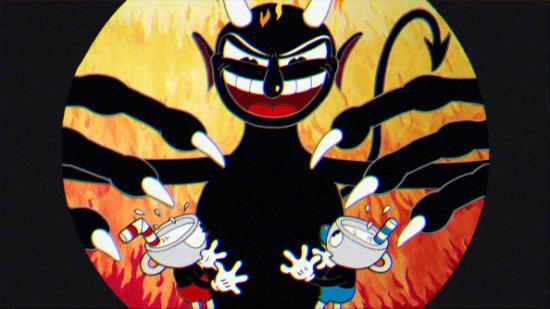What a lovely-looking thing Cuphead is to see on your screen. Pitch-perfect mid-20th century animation style and ultra-responsive 16-bit era platforming married by game design I’m not smart enough to comprehend. Bit.. um… bit hard though, isn’t it?
Maybe it’s just me. I’m prepared to accept that possibility. But I found it genuinely difficult to stay alive for twenty straight seconds in any of Cuphead’s platforming levels. As you’ll see in the video below.
Get your kicks watching PCGN play games? Check out our Last Leviathan and Inside Let’s Play series.
The problem, as I see it in retrospect, is that I didn’t really try killing anything. I know how that sounds, but I thought it might actually make things easier. Simplify my range of inputs. That was not the correct approach. I got killed f*cking loads.
Every level I played felt like the final area of a platformer that had been preceeded by 25 to 50 easier areas, gradually letting muscle memory take root. Gradually letting you learn how far the dodge input moves you across the screen. Gradually giving you a hope in hell.
Cuphead does the opposite of that, beginning at the apex of old-school platfomers’ difficulty levels and taking it from there. Some people love that. They love the challenge. They like the idea that the game isn’t there to hold their hand, but instead to jut out its chin and dare them to beat it just once.
I’m absolutely determined not to mention that game while I’m discussing difficulty levels, but I will say this much: it’s refreshing to see a game marry such ruthless challenge with an ostensibly cheerful visual aesthetic. The ’30s-40s animation style seeks to retain the more surreal elements from that era and succeeds, at least from what I’ve seen in between restart screens. But surreal doesn’t equate to hostile – it’s welcoming, inasmuch as the likes of Mario, Contra et al were in the 16-bit days.
Cuphead’s due for release later in 2016. I’ll practice it a bit more before releasing any more footage of my prowess.
